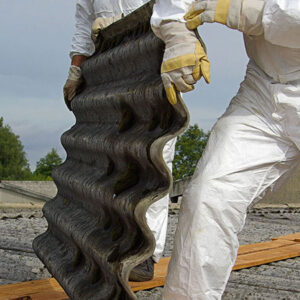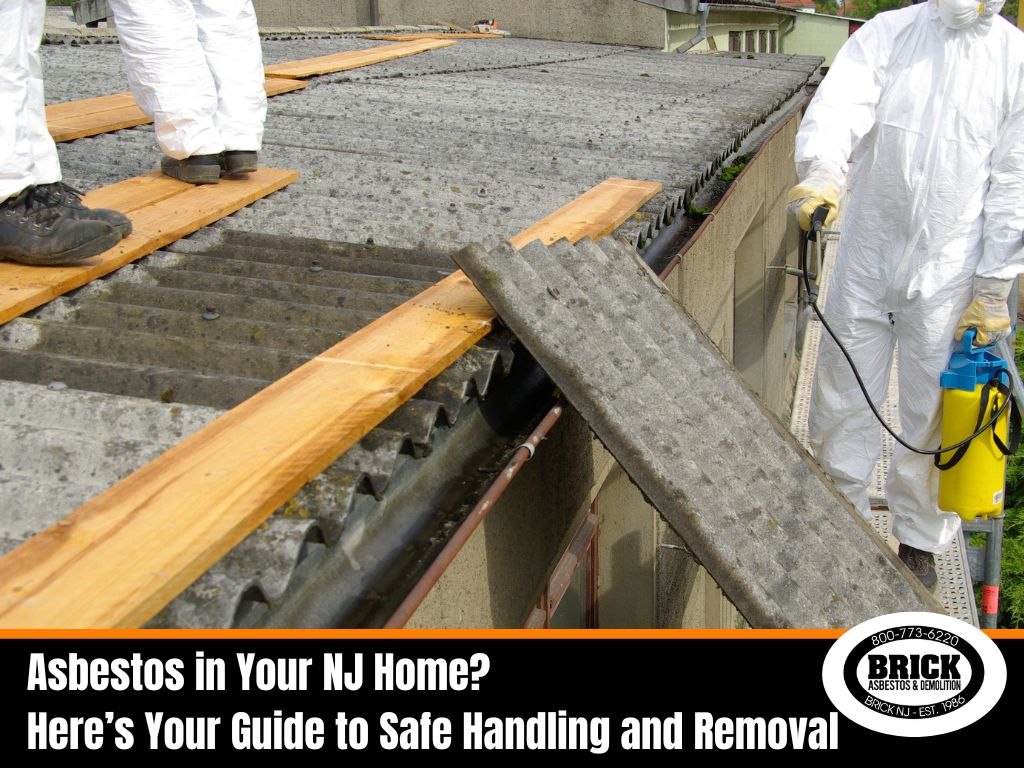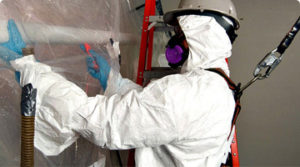Training Programs For Asbestos Removal Professionals Removal Of Asbestos Roof In Area
Asbestos abatement guidelines are important for ensuring safety and minimizing health risks related to asbestos exposure - Resources For Asbestos Roof Liability Coverage. Asbestos is a naturally occurring mineral that was extensively utilized in development materials and numerous merchandise as a result of its power and heat resistance. However, prolonged exposure to asbestos fibers can result in important health issues, together with lung cancer and mesothelioma. As such, dealing with asbestos requires cautious planning and adherence to established guidelines
Before any abatement work begins, it is important to conduct a thorough assessment of the site. This includes figuring out all asbestos-containing materials (ACMs) current and understanding their situation. If they are broken or deteriorating, the risk of fiber launch into the air increases, making it necessary to plan for removal or encapsulation.

Proper training for personnel concerned in asbestos abatement is paramount. Workers must endure specialized training to handle asbestos safely. This training ought to cover the use of personal protective equipment (PPE), safe handling techniques, and emergency procedures for coping with potential exposure. Additionally, solely certified professionals ought to perform abatement actions, as they possess the expertise required to administer hazardous materials successfully.
Asbestos Roof Removal Health Risks Safe, Reliable And Experienced Removal Services
Effective communication performs a crucial position within the compliance with asbestos abatement guidelines. Property house owners and contractors should be sure that all stakeholders are informed concerning the presence of asbestos and the proposed abatement plans. This consists of notifying employees, tenants, and any related authorities about the potential hazards and the measures that shall be undertaken to mitigate risks.
Once the assessment is full and a plan is in place, the subsequent step involves selecting the suitable abatement method. Common methods include removal, encapsulation, and enclosure. Removal involves the entire extraction of asbestos materials, whereas encapsulation seals the fibers in place to forestall release. Enclosure, on the opposite hand, entails setting up barriers to include the asbestos.
Proper containment procedures are important in the course of the abatement process. This contains utilizing plastic sheeting to seal off work areas and forestall contamination of the encircling environment. Negative air stress techniques may be utilized to make sure that any airborne fibers are contained within the work area, further protecting other areas of the building.

During the abatement process, frequent air monitoring is essential. Asbestos Risk Mitigation During Roofing Projects. This helps ensure that fiber levels remain below permissible limits. If testing indicates an increase in fiber levels, immediate motion should be taken to handle the contamination, which may involve halting work until the issue is resolved and further containment measures are put in place
Importance Of Documentation In Asbestos Projects What To Do If You Find Asbestos
Once the abatement work is accomplished, correct disposal of the asbestos is important. Asbestos waste have to be handled and transported in accordance with local regulations, typically requiring disposal at specialized landfills equipped to manage hazardous materials. Clear labeling and secure packaging of the waste are critical to forestall unintended exposure during handling and transport.
After the disposal, a follow-up inspection should be carried out to confirm that the abatement was successful. This may contain additional air monitoring and a visual inspection of the work space. Proper documentation of the whole process, including assessments, monitoring outcomes, and disposal data, is important for compliance and future reference.
Asbestos Awareness Campaigns In Sydney Risks Associated With Asbestos Roofs
In addition to following these particular guidelines, common training and updates are crucial for all personnel concerned in asbestos management. Changes in regulations or best practices have to be communicated promptly to ensure ongoing compliance with safety requirements. Establishing a culture of safety that prioritizes health and environmental concerns can considerably enhance the effectiveness of any asbestos abatement program.
To sum up, the implementation of effective asbestos abatement guidelines isn't just a regulatory requirement but an ethical obligation to protect human health and the environment. The multifaceted method, including assessment, training, containment, monitoring, and proper disposal, performs an important function in minimizing the risks associated with asbestos exposure. Long-term vigilance and adherence to guidelines guarantee a safer environment for everybody.
In the top, effective management of asbestos ensures that communities are better shielded from its hazardous effects. This requires ongoing collaboration amongst contractors, property house owners, regulatory our bodies, and the workforce involved. By prioritizing safety and following established guidelines, it's possible to mitigate the risks posed by asbestos and create more healthy living and working areas for all.
Local Regulations For Asbestos Handling Diy Awareness For Asbestos Removal
- Always conduct a thorough inspection and risk assessment by an authorized professional before starting any asbestos abatement project.
- Develop a comprehensive management plan that outlines the procedures, duties, and safety measures to be adopted in the course of the abatement process.
- Use applicable private protective equipment (PPE) such as respirators, disposable coveralls, and gloves to stop exposure in the course of the handling of asbestos-containing materials.
- Ensure that the work space is properly contained and ventilated to attenuate the discharge of asbestos fibers into the encompassing environment.
- Implement decontamination procedures for workers and equipment, including dedicated wash stations and methods for safely disposing of asbestos waste.
- Notify local authorities and residents about the abatement project, adhering to any required regulations related to public safety and environmental safety.
- Utilize approved asbestos abatement techniques, such as encapsulation or removal, relying on the condition and location of the materials.
- Employ effective monitoring and air high quality testing before, throughout, and after the abatement to ensure compliance with legal requirements for airborne asbestos levels.
- Train all personnel involved in the abatement process on safe handling practices and emergency response procedures to ensure a safe work environment.
- Keep detailed information of the entire abatement process, including inspections, abatement methods used, waste disposal documentation, and air quality tests results.undefinedWhat is asbestos abatement?
Asbestos abatement refers to the process of lowering or eliminating asbestos hazards in buildings. This can embrace removal, encapsulation, or enclosure of asbestos materials, carried out by licensed professionals to ensure safety and compliance with regulations.
Why is asbestos abatement necessary?
Asbestos Removal Equipment Used In Sydney Safe, Reliable And Experienced Removal Services
Asbestos abatement is critical to protect human health. Asbestos exposure can result in critical sicknesses, together with lung most cancers and mesothelioma. Proper abatement prevents asbestos fibers from becoming airborne and minimizes the risk of exposure.
What are the guidelines for asbestos abatement?
Asbestos abatement guidelines embrace following federal, state, and local regulations, conducting thorough inspections, establishing correct safety protocols, using licensed professionals, and documenting all procedures and findings for compliance and safety records.
Who should carry out asbestos abatement?
Asbestos Regulations Affecting Roof Removal Removal & Replacement Of Roof Asbestos
Asbestos abatement should be performed by educated and licensed professionals who concentrate on hazardous materials. They have the required instruments, data, and expertise to conduct safe and effective abatement procedures.
What precautions are taken throughout asbestos abatement?
Precautions throughout asbestos abatement include sealing off the work area, using protective gear, using HEPA-filtered vacuums, and making certain proper waste disposal. Adhering to these precautions minimizes the danger of contamination and protects workers and residents.
How can I find licensed asbestos abatement contractors?
Asbestos Risk Mitigation During Roofing Projects Best & Cheap Removal Services Available
To find licensed asbestos abatement contractors, you'll find a way to check your state’s health department or environmental agency, search on-line directories, or request recommendations from native building authorities. Verify their credentials earlier than hiring.
What is the cost of asbestos abatement?
Asbestos Removal Liability Insurance Considerations Removal And Disposal Of Asbestos

The cost of asbestos abatement can differ widely relying on factors such as the extent of asbestos present, location, and the complexity of the job. An initial inspection is commonly required to provide an accurate estimate.
Are there laws governing asbestos abatement?
Yes, there are numerous legal guidelines and regulations governing asbestos abatement, including the Clean Air Act and OSHA regulations. These legal guidelines are designed to protect employees and the basic public from hazardous exposure and description strict procedures that have to be adopted.
Handling Asbestos Shingles And Tiles Safely Commercial Roofing Contractor For Removal
What ought to I do if I suspect asbestos in my home?
If you think asbestos in your home, keep away from disturbing the fabric and search professional recommendation. It is advisable to rent an authorized inspector to evaluate the state of affairs and recommend acceptable actions, corresponding to testing or abatement.
How long does an asbestos abatement project take?
The length of an asbestos abatement project can vary based mostly on the scale and complexity of the work. Most small to medium initiatives could be accomplished in a couple of days, whereas larger, more difficult jobs could take weeks. Planning and scheduling are essential for correct timelines.
visit the site company website